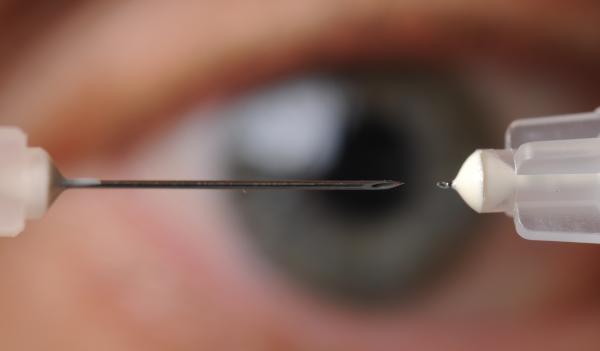Needles almost too small to be seen with the unaided eye could be the basis for new treatment options for two of the world’s leading eye diseases: glaucoma and corneal neovascularization.
The microneedles, ranging in length from 400 to 700 microns, could provide a new way to deliver drugs to specific areas within the eye relevant to these diseases. By targeting the drugs only to specific parts of the eye instead of the entire eye, researchers hope to increase effectiveness, limit side effects and reduce the amount of drug needed.
For glaucoma, which affects about 2.2 million people in the United States and is the second-leading cause of blindness worldwide, the goal is to develop time-release drugs that could replace daily administration of eye drops. A painless microneedle injection made once every three to six months – potentially during regular office visits – could improve treatment outcomes by providing consistent dosages and overcoming patient compliance issues.
In the second disease, corneal neovascularization, corneal injury results in the growth of unwanted blood vessels that impair vision. To treat it, the researchers developed solid microneedles for delivering a dry drug compound that stops the vessel growth.
“The power of microneedles for treating eye conditions is the ability to target delivery of the drug within the eye,” said Mark Prausnitz, a Regents’ professor in the School of Chemical & Biomolecular Engineering at the Georgia Institute of Technology. “We are developing different microneedle-based systems that can put the drug precisely into the part of the eye where it’s needed. In many cases, we hope to couple that delivery with a controlled-release formulation that would allow one application to treat a condition for weeks or months.”
Media Contact
Story by John Toon. Courtesy of Research News at Georgia Institute of Technology.
Latest BME News
Jo honored for his impact on science and mentorship
The department rises to the top in biomedical engineering programs for undergraduate education.
Commercialization program in Coulter BME announces project teams who will receive support to get their research to market.
Courses in the Wallace H. Coulter Department of Biomedical Engineering are being reformatted to incorporate AI and machine learning so students are prepared for a data-driven biotech sector.
Influenced by her mother's journey in engineering, Sriya Surapaneni hopes to inspire other young women in the field.
Coulter BME Professor Earns Tenure, Eyes Future of Innovation in Health and Medicine
The grant will fund the development of cutting-edge technology that could detect colorectal cancer through a simple breath test
The surgical support device landed Coulter BME its 4th consecutive win for the College of Engineering competition.








